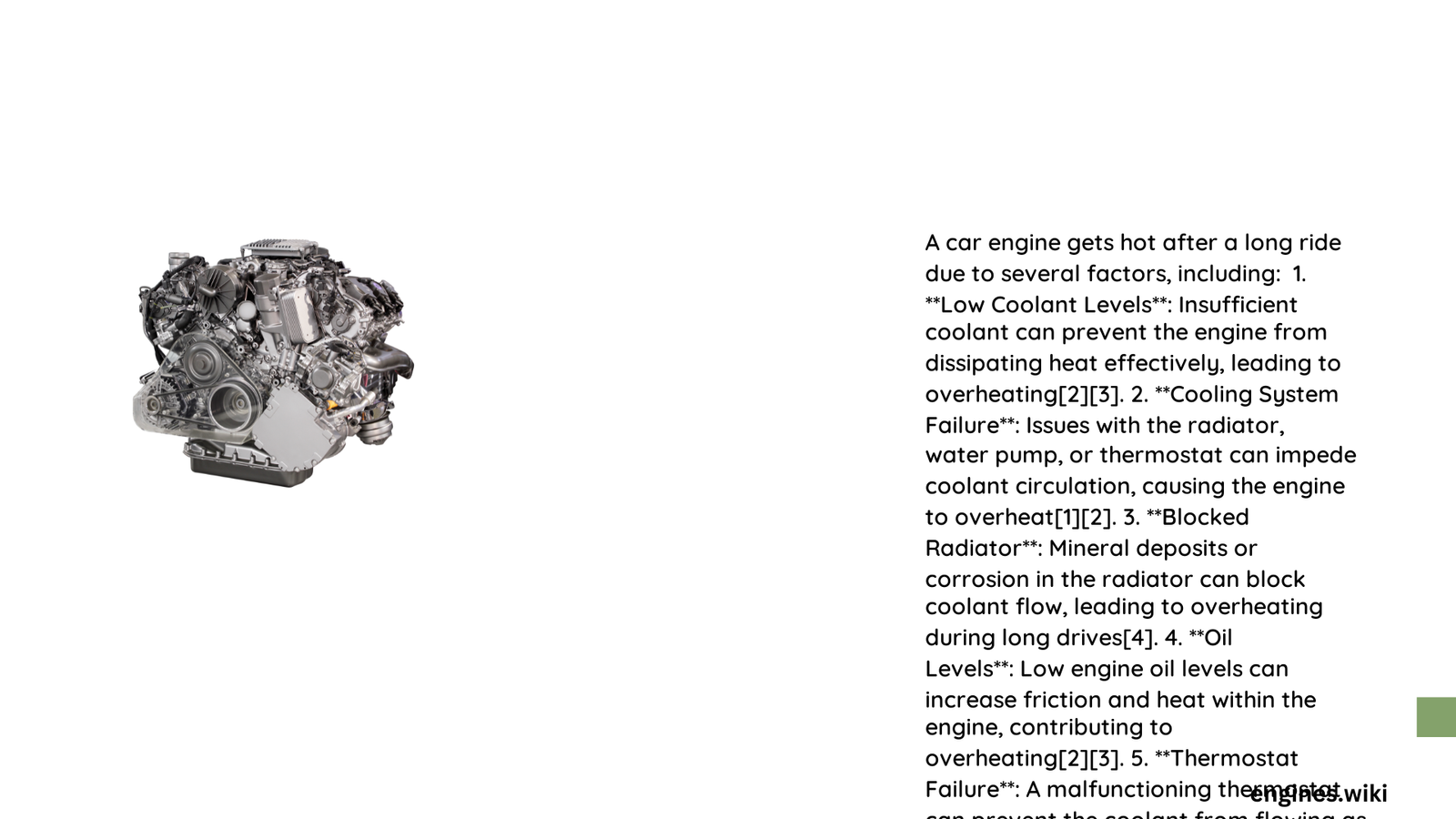Why a Car Engine Gets Hot After a Long Ride: Technical Insights
When you complete a lengthy drive, your car’s engine experiences significant thermal stress due to continuous mechanical operation, friction generation, and complex energy conversion processes. Extended driving creates cumulative heat through multiple interconnected mechanisms, causing temperature elevation that challenges the vehicle’s cooling infrastructure.
What Generates Heat During Extended Driving?
Mechanical Friction and Energy Conversion
- Combustion Process: Internal combustion generates approximately 70-75% of energy as heat
- Mechanical Components: Pistons, crankshafts, and bearings create friction-induced thermal energy
- Continuous Operation: Prolonged driving increases cumulative heat generation
| Heat Source | Temperature Range | Contribution Percentage |
|---|---|---|
| Combustion | 2000-2500°F | 70-75% |
| Friction | 300-500°F | 15-20% |
| Mechanical | 200-400°F | 5-10% |
How Does Engine Load Impact Temperature?
Factors Influencing Heat Accumulation
- Driving Conditions
- Highway driving at consistent speeds
- Uphill terrain traversal
- Heavy load transportation
-
Continuous acceleration and deceleration
-
Vehicle-Specific Variables
- Engine size and design
- Cooling system efficiency
- Ambient temperature
- Maintenance history
What Happens During Extended Heat Buildup?
Thermal Stress Mechanisms
- Coolant System Challenges
- Reduced heat dissipation efficiency
- Potential coolant temperature threshold exceedance
-
Risk of system pressure fluctuations
-
Mechanical Component Implications
- Increased metal expansion
- Potential lubrication breakdown
- Higher risk of premature wear
Why Can Prolonged Driving Cause Overheating?
Critical Temperature Thresholds
- Normal Operating Range: 195°F to 220°F
- Overheating Zone: Above 230°F
- Critical Failure Point: 250°F and higher
How to Prevent Engine Heat Accumulation?
Proactive Maintenance Strategies
- Regular coolant system inspections
- Maintain proper coolant levels
- Check radiator and hose conditions
- Monitor temperature gauge during long drives
- Perform periodic cooling system flush
Technical Recommendations for Long-Distance Driving
Heat Management Techniques
- Use high-quality coolant
- Ensure proper thermostat functionality
- Maintain consistent vehicle speed
- Plan periodic cooling system breaks during extended trips
Potential Consequences of Persistent Overheating
Mechanical Damage Scenarios
- Blown head gaskets
- Warped cylinder heads
- Cracked engine block
- Reduced engine performance
- Increased repair costs
Conclusion
Understanding why a car engine gets hot after a long ride involves complex thermal dynamics, mechanical interactions, and systemic performance factors. Proactive maintenance and awareness can significantly mitigate potential heat-related damages.

